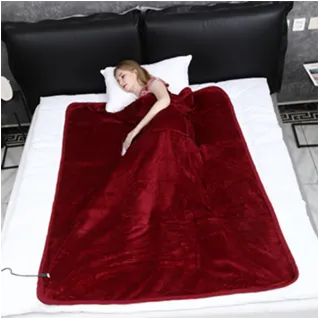
Sep . 30, 2024 01:36 Back to list
Understanding the Running Costs of Electric Blankets and Their Energy Consumption
The Cost of Running an Electric Blanket An In-depth Analysis
As the chill of winter approaches, many people turn to electric blankets for warmth and comfort. However, the cost associated with running these convenient devices often prompts questions about their efficiency and affordability. Understanding the cost of using an electric blanket requires examining factors such as wattage, usage patterns, energy rates, and the overall benefits of these blankets.
Understanding Electric Blanket Wattage
Electric blankets come in various designs and wattages, typically ranging from 50 to 150 watts. The wattage indicates how much electricity the blanket consumes per hour of use. For instance, a blanket with 100 watts consumes 0.1 kilowatt-hours (kWh) of electricity each hour. This consumption is a critical factor when calculating the overall running cost.
Calculating Energy Costs
To estimate the cost of running an electric blanket, you need to know your local electricity rate, which is generally expressed in cents per kWh. For example, let's assume the average electricity rate is $0.13 per kWh—a rate consistent across many regions in the United States.
Using the earlier example of a 100-watt electric blanket, the calculation would be as follows
1. Power Consumption 100 watts = 0.1 kWh 2. Cost per Hour 0.1 kWh * $0.13 = $0.013
This means running a 100-watt electric blanket costs approximately 1.3 cents per hour. If you use the blanket for 8 hours a night, the nightly cost would rise to about 10.4 cents. Over a month (30 days of use), that would total around $3.12—an affordable price for a month’s worth of nightly comfort.
cost of electric blanket to run

Usage Patterns Impacting Total Cost
The total cost of running an electric blanket heavily depends on usage patterns. For example, if you use the blanket for only a few hours each night, the cost remains minimal. On the other hand, if you leave it on for extended periods, like all night or through the day, costs will rise accordingly. The adaptability of many modern electric blankets, including timers and adjustable heat settings, allows users to manage their energy consumption more effectively.
The Benefits of Electric Blankets
Despite the minor costs associated with running an electric blanket, the benefits generally outweigh the expenses. Electric blankets can provide relief for those suffering from arthritis or muscle pain, assisting in improving sleep quality. Additionally, electric blankets have the potential to lower heating bills. By warming your bed before sleep, you may find that you can lower your home’s thermostat at night, leading to further savings on heating costs.
Environmental Considerations
When evaluating the cost of running an electric blanket, it’s also important to consider the environmental impact. Electric blankets generally have a lower carbon footprint compared to central heating systems, which consume significantly more energy. By using an electric blanket strategically, consumers can enjoy warmth while contributing to a decrease in overall energy consumption.
Conclusion
In summary, the cost of running an electric blanket is relatively low, particularly when considering the immediate benefits it provides in terms of comfort and potential savings on heating bills. Understanding your blanket's wattage and local electricity costs can help you gauge the financial implications of regular use. Thus, as winter approaches, investing in an electric blanket could prove not only to be a wise choice for warmth but also an economical and environmentally friendly one. Embrace the season snugly, knowing your electric blanket is both an efficient and beneficial companion during the colder months.
-
Innovations and Applications of Modern Electric Heating Blankets
Jul.07,2025
-
Innovations and Applications of Electric Fleece Blanket Systems
Jul.07,2025
-
Functional and Cozy Solutions for Personalized Warmth
Jul.07,2025
-
Essential Comfort and Warmth Solutions: Heated Blanket Variants
Jul.07,2025
-
Enhancing Coziness with Warmth - Centric Blanket Solutions
Jul.07,2025
-
Enhancing Comfort and Warmth: Electric Blanket Solutions
Jul.07,2025
Realted Products



